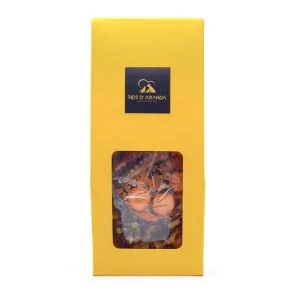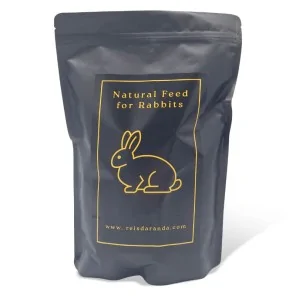Its name says it all: the Vienna blue rabbit comes from Austria. Not only is it beautiful with its shiny blue-grey...
THE ENGLISH LOP RABBIT
INTRODUCTION
Known for having the longest ears of all rabbit breeds, the English Lop is also considered the original lop rabbit. Bred in the early 19th century and prized as a pet in the Victorian era, the English Lop was used to develop other lop breeds like the French Lop and the Mini Lop.
THE ORIGIN OF THE ENGLISH BELIER
As the first lop breed, the English Lop was developed in England in the 19th century for exhibition as one of the first ‘fancy’ breeds, in response to the growing animal fancy of the time. During the Victorian era, the English Lop emerged as a conventional domestic pet, marking a shift for these ‘fancy’ breeds from the earlier role of the domesticated rabbit as a source of meat, fur and wool production. Subsequently, the English Lop was crossed with other rabbit breeds on the continent, giving rise to new lop breeds including the French Lop (from the English Lop / Flemish Giant crosses) and the Holland Lop (from the French Lop / Netherland Dwarf crosses).
WHAT IS THE ENGLISH BELIER LIKE?
1. TYPE: The type of the modern English ram should be easily erected. Compared to other rams, the body is leaner and slimmer, so that the proportions of the fore and hindquarters give English rams a typical breed position, which makes the hindquarters and hips appear noticeable. However, the forelegs must be sufficiently strong and well muscled to ensure sufficient ground clearance in front of the body as well. A small, well formed dewlap is permissible for rabbits.
- Slight faults: See under general information. Particular type of breed of slightly different shape, weak forequarters without ground clearance.
2. WEIGHT:
- Normal weight > 4.25 kg.
- Minimum weight 3.50 kg.
- Maximum weight 5.50 kg.
3. COAT : The coat is of medium length and dense. In addition, a well developed and not too harsh coat is desired. The ears are well set.
4. HEAD: The distinctive head is longer than that of the other ram breeds, but broad in the forehead and muzzle. The frontonasal profile is convex and much more pronounced in males. The muzzle is well developed.
EARS: The ears should be stable, strong in tissue and free from knots, growths or tears. They hang loosely from the body, with the auditory meatus opening forward, set close at the root without pronounced protrusions, reaching their greatest width in the middle and well rounded at the end. The length of the curtain is ideally around 58 cm, with correspondingly stable tissue, measured horizontally over the head of the animal from one end to the other. the width of the curtain is ideally 13.5 cm, with correspondingly stable tissue. the width of the ears is determined in the middle of the curtains. The largest width is measured without the hair at the edges of the ears. The evaluation of beautiful curtains should be done in the interest of animal welfare, but not in competition for centimetres. Priority should be given to the beauty of the ear structure. The curtain in the length and width described should be without structure or the tissue defects are present with the animal in a slightly upright position.
- Slight faults: Formation of small knots, small tears or bites in the ears. slightly long or broad ears. slight deviations from the required stable tissue.
- SERIOUS FAULTS: see under general information. Ears severely torn or too cartilaginous. curtains worn on one side. Too narrow (less than 12.0 cm), too wide (more than 15.0 cm), too short (less than 55.0 cm) or too long (more than 61.0 cm). severe deviations from the required stable fabric.
6. COLOUR AND UNIFORMITY: Open to all colours (except silver). In addition, dyes are permitted. Mantle pattern desirable.
The undercoat colour is orange all over the body and should reach to the skin. The under colour of the belly is duller and slightly lighter with a transition to cream.
- MINOR AND SERIOUS FAULTS: The corresponding faults of the rams also apply to slight and severe deviations in the pattern, covering, intermediate and undercoat.
THE HEALTH OF THE ENGLISH BELIER
Due to the large size of the ears, English lops are somewhat more vulnerable to a number of health problems, particularly ear infections, and it is recommended that the ears be checked periodically, especially for excess earwax which may accumulate in the deep ear canals, and cleaned where appropriate. Ear imperfections can be minimised by keeping toenails trimmed, which can prevent injury from the rabbit stepping on its ears. The large surface area of their ears and body and the absence of a dense undercoat can result in increased heat loss, which can become a problem for outdoor rabbits in cold climates and winters, and special measures should be taken to insulate the hutch, such as the provision of additional bedding and hay, and draught excluders. In freezing conditions, an English Lop should never be given a dish of water or a crock, as wet cobs will freeze. Consequently, English Lops perform better in heat than many other breeds of rabbits, due to the cooling factor of their large ears. However, any temperature above 29°C (85°F) is considered dangerously high and care should be taken to ensure that the rabbit has sufficient shade, fresh water or a cool surface to lie on. An English Lop can live in a solid bottom cage or cage with bedding provided, or in a properly spaced wire bottom cage, provided it has a thick resting board/platform to avoid injury to the hocks.
The ideal age for the English Lop doe to begin breeding is 10 months of age. The English Lop doe is known to be particularly prolific, with rich milk and good maternal sense, and can produce large litters of 5 to 12, with a gestation period of 28 to 35 days. On average, they give birth between 30 and 32 days.
THE PERSONALITY OF THE ENGLISH BELIER
Adult English Lops are often referred to as the ‘dogs of the rabbit world’. In general, they are known to be quite calm (even lazy), outgoing, curious and friendly. They can make wonderful pets for children, although as a large breed rabbit, any interaction between child and rabbit should be supervised.
CONCLUSION
-Despite its name, this breed originated in Africa, where animals with larger ears survived because (as with African versus Asian elephants) they were able to better control body temperature due to their larger ears, reaching up to half a metre in length. In adulthood they reach up to 4kg.
Leave a comment
Log in to post comments















